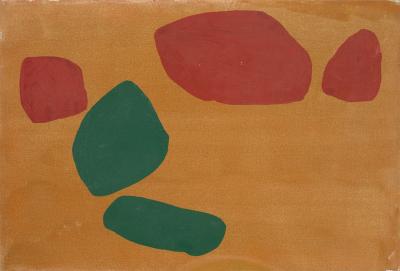The Lure of Antique Frames
Antique frames, in their seemingly infinite shapes and sizes, are beautiful mementos of bygone days. Intricate designs evoke a time when craftsmanship was an art in itself. Instead of being diminished by the passage of time, frames, like fine wines, are enhanced by maturity. Age seasons their color, adds character to their composition, and increases their value. Even tiny wormholes suggest that history has been at work, marking the passage of time.
Yet the frame is the Cinderella of the art world; beautiful, hardworking, and frequently overlooked. The carefully-wrought creations of previous centuries are at the mercy of shifting tastes that can cause them to be replaced, condemned to storage, or, worst of all, destroyed. Few people, outside of a small circle of experts, are familiar with the long and very colorful history of frames.
The wooden frame as we know it made its debut in the form of altarpieces in twelfth-century Italian churches and private chapels. These large wooden panels displayed images of religious figures and were architectural in that they often echoed the overall design of the church itself. Eventually, lighter and more versatile frames began to appear in royal and aristocratic households. The fifteenth-century tabernacle, or aedicular, frame kept the general shape of its architecture-inspired antecedents, but was smaller and more portable. The cassetta (“little box”), or plate frame, which was very popular in Italy, was shaped like a box and easily moved; it was decorated or left plain according to taste. The tondo frame was round and usually decorated with a wreath of carved leaves.
Frame workshops flourished throughout Renaissance Italy and the successful framer was the equal of any artist. In fact, it was not unusual for a patron to engage a carver to build a substantial frame before an artist was retained to create a painting for it. Leonardo da Vinci had to wait patiently for Italian master woodcarver Giacomo del Maino to finish creating his masterpiece—a hand-crafted frame—before the great painter could begin work on one of his famous paintings, Virgin of the Rocks.1
In Europe, frame designs varied according to their country of origin. The auricular frame, containing shapes resembling ears or earlobes (Fig. 1), was inspired by the distinctive creations of Dutch silversmith Paul de Lamerie (1688–1751), a seventeenth century craftsman who was so intrigued by a series of anatomy lectures he attended in Prague that he incorporated cartilaginous forms into his work. Auricular frames also featured marine shapes such as shells, making them a favorite choice of wealthy traders who lived in seaports. The auricular frame made its debut in Italy in the late seventeenth century, when Cardinal Leopoldo de Medici selected it for his diverse collections of paintings, including portraits by Rembrandt, Titian, and Caravaggio.
In seventeenth-century Holland, simple, unadorned frames rendered in dark woods (Fig. 2) became increasingly popular as the country became more Protestant and its decorative styles became more subdued. In addition, houses in the Netherlands were taxed according to their frontage; the narrower the house, the lower the tax. Consequently, windows were oversized and walls and floors were pale to maximize natural light. Dark frames made of costly ebony and tortoiseshell looked ideal in this environment.
In Spain, framemakers followed in the footsteps of their Italian neighbors. But even then Spanish frames had a drama and excitement all their own. Spain’s bold aesthetic was enhanced by influences from its South American colonies, which contributed a mixture of exotic influences that resulted in frames that were vigorous and varied. Masks, flower head and leaf carvings, faux-leather punchwork, and scrolling acanthus leaves are a few of the lively and dramatic designs displayed on Spanish frames. Spain reached its cultural peak in the seventeenth century and the country’s framemakers were at the height of their creativity at this time. Some of the most unusual Spanish frames were produced in the provinces, where designs were bold, colorful, and folksy (Fig. 3). Rarely understated or demure, antique Spanish frames could be counted on to announce themselves with flair and braggadocio.
Europe’s golden age of frame-making commenced in France in the seventeenth century, when Paris became the artistic center of the world. During this time, the French Court dictated le dernier cri in all matters of style. The tastemakers responsible for establishing French supremacy were the “Louis,” a succession of high-wattage kings who dominated international culture for over a hundred years.
One of Louis XIII’s (reigned 1610–1643) principal concerns was to keep French artists in France when many traditionally went off to Italy, then the acknowledged capital of the arts. Louis XIII encouraged a new sense of nationalism among his people, and thanks to his efforts, French artists instead remained in situ. The frames made during his reign echoed the elaborate baroque details found in French architecture and interior design of the period. Highly ornamented, they had continuous carvings of foliage, including acanthus, oak, and laurel leaves, husks, and sprays of flowers, often accompanied by carved ribbons.

- Fig. 4: One of a pair of frames by Jean Cherin, Paris, France, mid-18th century. (Detailed) Exquisitely carved example of transitional Louis XV-style gilt double sweep frame ornamented with shell centers, acanthus fan corners, and top crested with a ribbon-tied leaf and flower cluster above a cabochon. 43 x 34-1/4 inches; W. 10 in. Courtesy of Lowy.
Organic ornamentation remained in style when Louis XIV, the Sun King, ascended to the throne in 1643. He headquartered his court at Versailles, a sumptuous palace with baroque décor and frames—heavy, ornate, and boldly carved, with pronounced corner and center decoration—reflected the monarch’s pronounced appetite for opulence. As with other furnishings at Versailles, frame decorations often included carved and gilded fleur-de-lis and sunflowers in homage to the Sun King.
With Louis XIV’s death in 1715, his successor, Philippe II, Duc d’Orléans, acted as regent for the young Louis XV until 1722. During this period known as la Régence the taste in decorative arts was for a style that was lighter and more playful. While frames continued to emphasize corners and centers with cartouches, shells, and other decorative elements, they also incorporated empty spaces to balance the ornamentation.
After Louis XV began his reign the Régence style was replaced by the rococo (derived from the French words rocaille, or rock, and coquille, meaning shell). This new style, rooted in asymmetrical naturalistic detailing, produced frames that suggested liveliness and motion and were decorated with panels scrolling or “sweeping” into corner and center ornaments. Framers charged separate fees for decorations, adding costs for festoons, ribbons, masks, and other “extras.” One way to keep the cost down was to substitute molded composition ornaments for carved wood as the former could be produced quickly and inexpensively.
The last Louis, Louis XVI (1754–1793), and his queen, Marie Antoinette, ruled at a time when neoclassicism, a style based on the aesthetic principles of ancient Greek and Roman art, was coming into fashion. Archeological excavation of the buried cities of Herculaneum and Pompeii in Italy in the 1730s had generated a fascination for the ancient world. Frames produced in the second half of the eighteenth century were influenced by classical architecture and exhibited thinner, more geometric shapes and simpler decorations. Their designs emphasized symmetry, reflecting a larger desire among the French for balance and equality in every aspect of life.
France’s finest frames were produced by master craftsmen who signed their work with stamps. In the Faubourg Saint-Antoine, the furniture-making district in Paris, carpenters (menuisiers) and cabinetmakers (ebenistes) built the frames, and “sculpteurs” carved them. The process of becoming a frame maker was arduous because the profession was controlled by powerful guilds. Fees were high and the training was long and rigorous—it was not uncommon for an apprentice to spend eighteen years serving a master. Only Jean Chérin and Etienne-Louis Infroit, two of France’s greatest frame artisans, were registered as both menuisiers and sculpteurs, meaning they could build and carve their frames (Figs. 4–4A)
In the early nineteenth century, England was the first country to be transformed by the Industrial Revolution and the first place where artists rebelled against it. Woodworking machines mass-produced cheap, utilitarian moldings that could be quickly and easily embellished with composition ornaments. The carvers who once spent years perfecting their skills became a dying breed. The Arts and Crafts and the Pre-Raphaelite movements were born, in part, to protest the forced obsolescence of the craftsman. Artists like Dante Gabriel Rossetti and William Morris longed to go back to a time when objects were made by hand and promoted the art of craftsmanship in their work and in the work of others. They were fascinated by visions of the colorful medieval world and created special frames, often made of carved and gilded oak and rendered in the fifteenth-century tabernacle style, to surround the poetic and fanciful images these figures inspired.
In the late nineteenth and early twentieth century, American frame makers became prominent. In 1891, architect Stanford White designed his classic grille frame (Fig. 5), a perfect complement to the paintings of artist Thomas Wilmer Dewing. Talented frame makers such as Hermann Dudley Murphy, Charles Prendergast, and Frederick Harer created works that proved Old World craftsmanship was flourishing in the New World.
In modern times, after WW I through the last quarter of the twentieth century, period frames fell out of fashion and endured decades of inattention and indignity. Many were stripped of their brilliant gold finishes, discarded, or relegated to the backrooms of antique stores. The prevailing trend among museums and collectors was to replace antique frames with sleek, minimalist edges.
But in the 1970s, period frames began to emerge from the shadows. Collectors, paying record prices for paintings, became more selective in their choice of frames for their pricey acquisitions. Antique frames, considered ostentatious and old-fashioned in the 1950s and 1960s, were suddenly just right in the 1980s, partly because collectors knew enough to appreciate them, and partly because, in this greed-is-good moment, buyers were not averse to displaying their wealth on the wall. Frames continued to step out in high style in the 1990s when they were the subject of exhibitions at The Metropolitan Museum, The Art Institute of Chicago, and the Bagatelle in Paris. They became coveted at auction; one year, French antique frames commanded the highest prices, while the next year, Spanish frames moved into first place. Prices soared to a record high in 1991, when a seventeenth-century carved amber mirror frame sold for almost a million dollars at Sotheby’s in London. Today these neglected treasures of bygone days are back in all their splendor and once again in the spotlight (Fig. 6, 7).
One of the early twentieth century connoisseurs of antique frames was Hilly Shar of Julius Lowy Frame and Restoring Company, Inc. in New York. Shar’s collection of frames ranged from Italian, French, and Spanish examples to Dutch and American masterworks. For the past 100 years, the firm has preserved and promoted antique and authentic reproduction frames, and in celebration of the company’s centennial, they have published The Secret Lives of Frames: One Hundred Years of Art and Artistry (Filipacchi, January 2007, $50.00). While the story of Lowy, the facets of frame making, proper fitting techniques, and even how to inspect for originality, are discussed, the majority of the book is devoted to a survey of the frame’s evolution. For more information, visit www.lowyonline.com.
-----
Deborah Davis is author of The Secret Lives of Frames. She is known for her best-selling books Strapless: John Singer Sargent and the Fall of Madame Xand Party of the Century: The Fabulous Story of Truman Capote and His Black and White Ball.






































